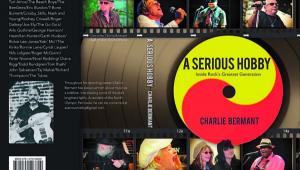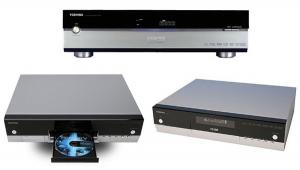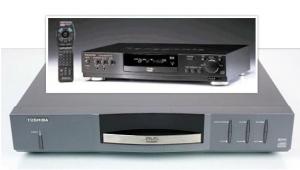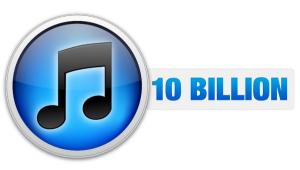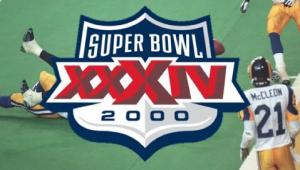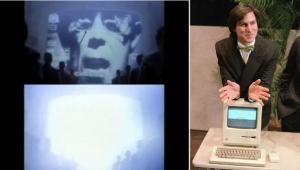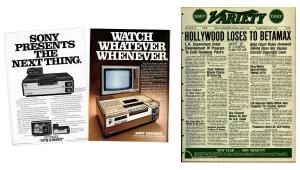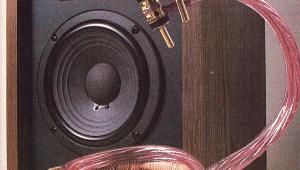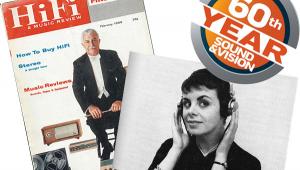Our old b/w tv was a Dupont or Capehart I think. It was a huge 17." I got out of the army in 1968 and my mother had just purchased a Zenith color set. All the controls were on the front and my brother and I were forever tweaking the color and hue settings, driving our mother crazy. The next color set I got was a 21" Sony Triniton. That lasted a pretty long time. The next color set I got was a 57" Sony RPTV. That lasted about 10 years until the color kept going into convergence problems. Now have a 55" panny plasma and it is gorgeous. It was one of the last panasonic plasma's.
Sixties Flashback: The Color TV Revolution
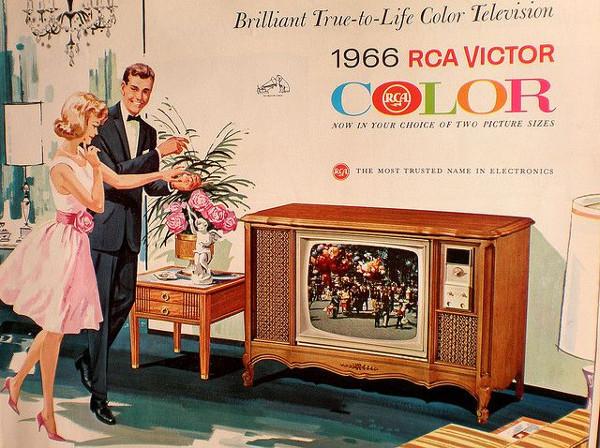
From Television Obscurities:
By 1958, there were an estimated 350,000 color sets in the United States, the bulk of which were manufactured by RCA [11]. That number had jumped to 500,000 by early 1960 [12]. The more color sets in use, the more potential eyeballs for color programming — and more importantly, from the advertiser’s point of view, color commercials. Still, the only network actively pushing color programming was NBC, which had 179 affiliates broadcasting in color by February of 1961. NBC “color days,” which started in November of 1960, saw the bulk of an entire day’s worth of programming broadcast in color [13].Read the full story here.An April 1961 editorial in Television magazine entitled “The Time Has Come for Togetherness on Color” noted that in the seven years since the FCC approved color standards, the “black-and-white television system […] has passed the peak of its growth.” Color, on the other hand, “is still in the egg, and only skillful and expensive handling will get it out of the egg and on its feet.” The editorial called for “color activity at both the transmitting and receiving ends. People won’t buy color sets to see a majority of programs in the same shades of gray the old table top model in the corner delivers” [14].
However, even as NBC was increasing its color output, CBS was placing the impetus in the hands of the advertiser. In 1963, the network was broadcasting in color only if an advertiser would help pay for the added cost [15].
The Color Breakthrough
Two years later, another editorial in Television magazine declared that “the surge of interest in color in the past six months marks September 1965 as the date of the long-awaited color breakthrough” [16]. What led to this surge in interest? The battle for ratings. A preliminary study released in March of 1965 by ARB (and paid for by all three networks) led NBC to announce that its color programming would give it a 1.4 ratings-point advantage over ABC and CBS [17]……the thought of NBC enjoying any sort of lead in the ratings simply because its programming was in color provided the impetus the other networks needed to jump headfirst into color broadcasting.
NBC planned to broadcast the vast majority of its primetime programming — all but two shows — in color at the start of the 1965-1966 season. Only Convoy (because of black and white stock footage) and I Dream of Jeannie (due to the cost of expensive special effects) would be aired in black and white [19]. Initially, both ABC and CBS planned to broadcast only a fraction of their schedules in color: ABC six and a half weekly hours and CBS only three programs per week [20], [21].
In May, CBS had upped its color quota to 28%, representing nine programs, including Lassie, My Favorite Martian, The Danny Kaye Show and Gilligan’s Island[22]… By June, the count stood at 50% for CBS and 33% for ABC and both networks claimed they would be all-color for the 1966-1967 season [24]. Color was on its way!
Color Households On The Rise If 1965 was the watershed moment for color broadcasting, there was still the small problem of the viewing public not having color television sets. According to NBC, there were only 2,860,000 color households in the United States as of January 1st, 1965 (though that was up from 1,620,000 on January 1st, 1964) [25]. By July 1st, the number stood at 3,600,000 and on October 1st it was at 4,450,000 color sets [26], [27]. NBC’s figure for January 1st, 1966 stood at 5,220,000, an 85% gain over the January 1st, 1965 number but still only 9.7% of all television households [28].
Share your thoughts and memories about color TV. If you’re old enough to remember getting your first color TV, was it a 19-inch portable or a 25-inch console like the set pictured in the RCA ad?
- Log in or register to post comments

My family bought its first color TV in the summer of 1968. My step-father wanted to see the Tigers play in the World Series in color. I remember it cost around $300, the equivalent of $2000 in 2016 dollars. It was a 25" console, the largest screen made for years.
